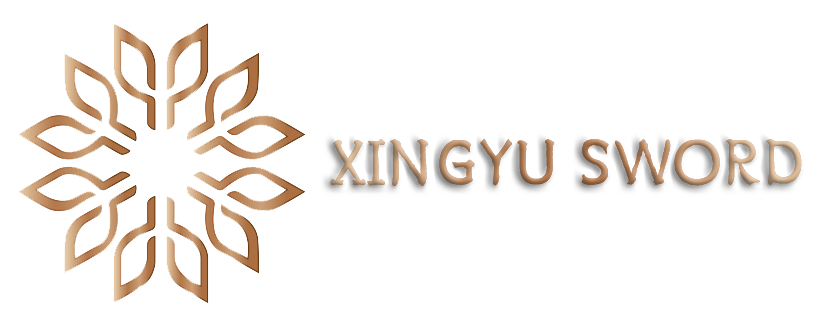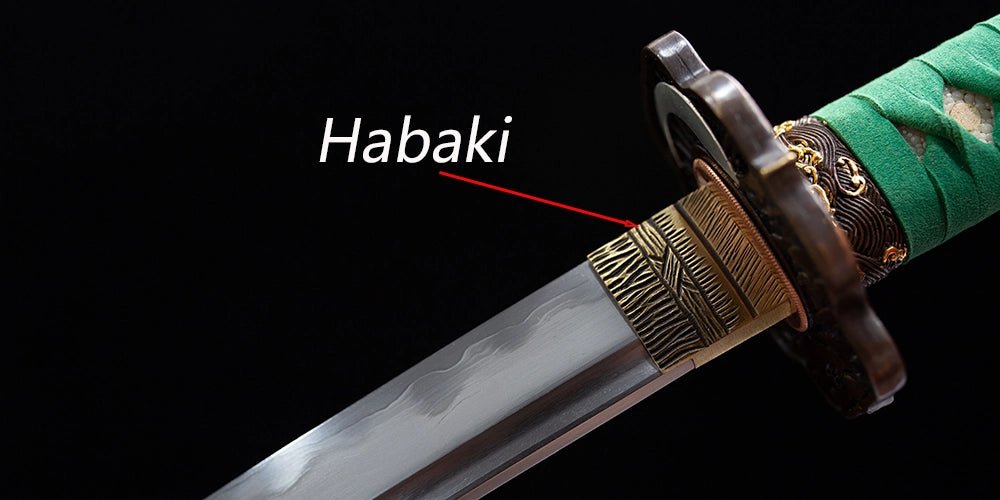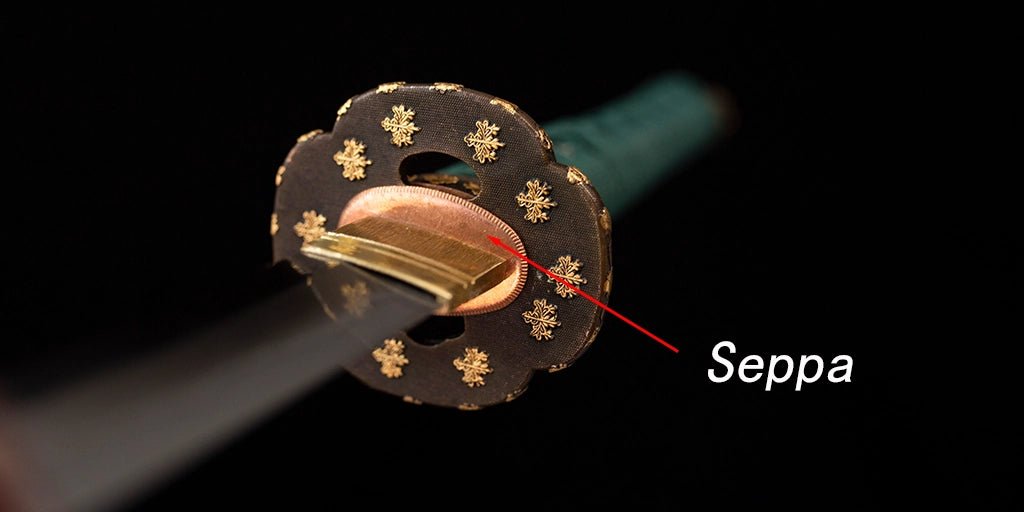"Tsuka-ito": The rope on the handle of the katana

What is tsuka-ito?
The rope wrapped around the outside of the katana tsuka sharkskin is called tsuka ito (or tsuka-maki), and is usually made not of silk, but of leather as well, with the highest grade silk rolls being hand-woven from brocade with golden handles, and these high grade items are usually used for ceremonial tachi, or efu no tachi, at the court or in the collection of the Shinto Shrine.
- Better Grip and Handling – both of the layers’ wraps help out significantly in giving the user a solid grip that results in better edge alignment and speed during cutting or iaido practices
- Rough Pattern – the samegawaand tsuka–maki styles give the handle a rough pattern which helps for a stronger and sturdier grip
- Protection – the wraps help protect the wooden core on top of the full-tang blade and the tsuka-ito.The hishigamiprotects the quality ray skin wrap beneath
- Non–Slippery – the different wrap materials help absorb any sweat on the user’s hands.
- Squeeze – the katana user can better squeeze the layers of wraps, especially with a hishigami,allowing for a superior grip on the sword when swinging it
- Personal Touch – different ray skin patterns, as well as different tsuka–kaki styles, can result in a personally crafted katana
- Traditional Design – traditionally, the two layers have been used by real samurai in history, and finding these genuine materials is difficult. Applying them to a katana handle makes the weapon a true work of art
How to tie tsuka ito
There are more than a dozen ways to wind a tsuka ito, with the more common ones being hira maki, maro hineri maki, kata tsumaki maki, and maro tsumami maki. there are also hilts that don't use tsuka maki but only use samegawa, which is generally only used for tanto and is known as dashi maki sametsuka.

It was common for swords to have several tsuka at the same time, and it was fashionable for samurai to change tsuka to match different outfits or to attend different occasions.
The tsuka maki is not just about catching comfort and absorbing sweat, it is also a tangible expression of the artistic value of the entire sword.

Maki-dashi- Maki-dash is what they call it when they start wrapping.
Moro-tsumami-maki- Itilt wrapping where the braids are not twisted but slightly pinched at the cross over.
Moro-hineri-maki- Htilt wrapping where both braids ate twisted at cross over. This is one of the most common tsukamaki styles.
Hira-maki- Hilt wrapping where both braids are just wrapped flat atop of each other at cross over (i.e not twists or pinches).
Musubi-tama- Htilt wrapping with a full knot at cross orer.
Kata-hineri-maki- Hineri maki is a basic style where both strands of the ito are twisted and folded at the crossover.
Nejiri-maki- The tsuka-maki, which is twisted into three strands, is the least common type.
Kata-tsumamimaki- Hit wrapping where just one braid is pinched at cross over (the other, underlying one is usually twisted).
Shino-maki- The center portion of each braid is wrapped with raised hilt, which gives the handle portion a grippier and ribbed appearance
karame-maki- Ffilt wrapping with knotted ctoss overs.
Tome-1.Tip/end of a groove towards the habaki. 2.End of the kaeri. 3.
End knot of a tsukamaki.
Makikake-kashira- Ponmel where the end of the hilt wrapping is knotted over. This concerns first and foremost Tensho and bangashi-koshirae. The knotted-over wrapping is also called kake-maki.
History of tsuka ito
The tsuka-ito appeared and became popular in Japan around the Muromachi period, before which most swords were "dashi zamizuka". The tsuka-ito has changed as the shape of the blade and the way it is worn changed, as well as the style of martial arts. Traditional tsuka-ito making is a very laborious process that generally involves several stages of handling. The hilt roll is not only designed to provide a comfortable, non-slip grip and to absorb perspiration, but it is also a tangible expression of the artistic value of the entire sword.
In ancient Japan, the tsuka-ito was washed in water and then dropped with a heavy object to the low end to straighten it out and lose its elasticity, and then tied so that it would be less prone to deformation. In modern times, with the advancement of textile technology and the advent of modern adhesives, this process is no longer important.
Materials for tsuka ito
The first is a good tsuka ito, in the Japanese mainland can choose from a wide range of options, such as: Silk, cotton, synthetic fibers, cowhide, deerskin.

▲Cowhide tsuka ito
It is said that existence is reason. Each material has its advantages and disadvantages, the best of which should be silk, soft and can maintain a good shape for a long time, the disadvantage is that it is too expensive, and easy to get dirty, you can use a layer of cloth on the outside to prevent soiling.Cotton rope, the sweat-absorbent holding effect is OK, the disadvantage is that it is not easy to tie. Synthetic fiber, compared to other materials it has no advantage, the only advantage is cheap. Leather (cowhide, deerskin) tsuka-ito, if the frequency of practice is high, leather I think is the first choice, resistant to dirt and corrosion, the disadvantage is that the price is high, and not easy to tie!

▲Cotton rope tsuka ito
Tsuka ito hishigami
Hishigami(lozenge paper) is the triangular paper pad under the tsuka-ito, the role is to fix the rhombus block, absorb sweat and blood, adjust the shape of the tsuka-ito, make it more three-dimensional and grip. hishigami are the choice of the best Japanese paper folded 8-10 layers cut into triangular standby, we can choose to fold 8-10 layers of cotton rice paper standby. The width of the hishigami is equivalent to the width of a handle coil, so that the two sides of the handle coil can be wrapped around the hishigami, which is very important, if not wrapped properly, firstly, it is unattractive, and secondly, the rhombus will be deformed in a short period of time.
The tsuka ito is a very important part of the katana, and is usually accompanied by a samegawa on top of the katana. After you understand its function, you can also choose different colors of tsuka ito to customize katana.



Leave a comment
This site is protected by hCaptcha and the hCaptcha Privacy Policy and Terms of Service apply.